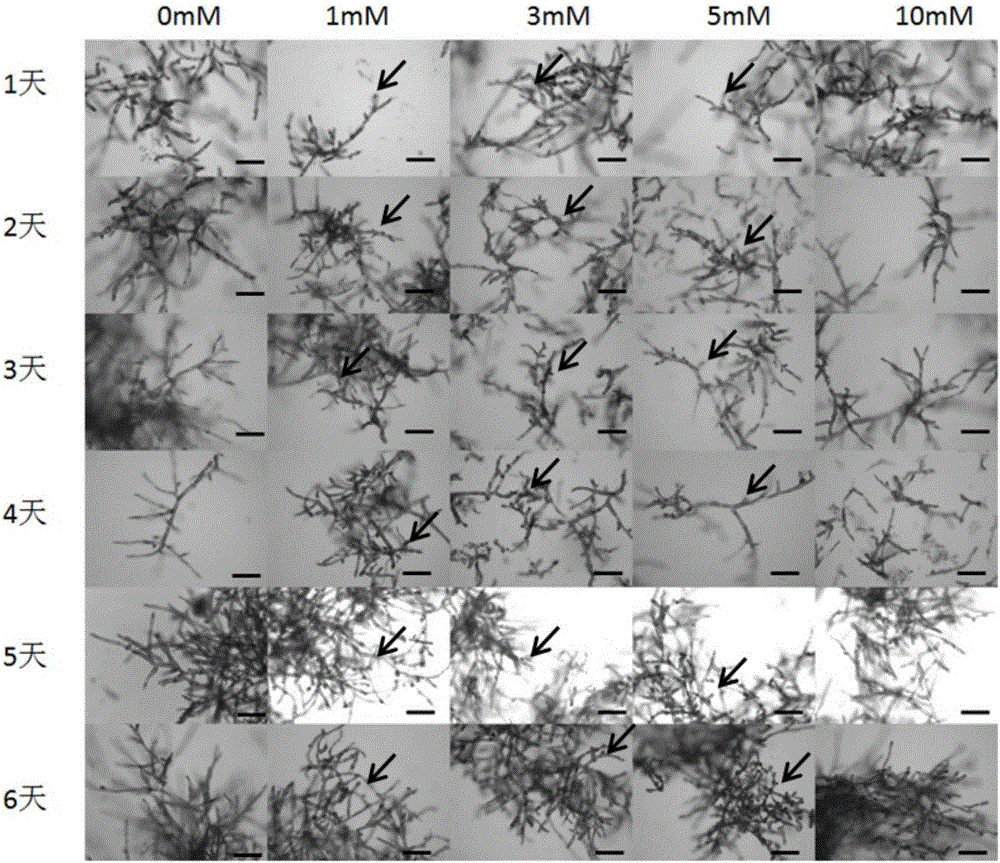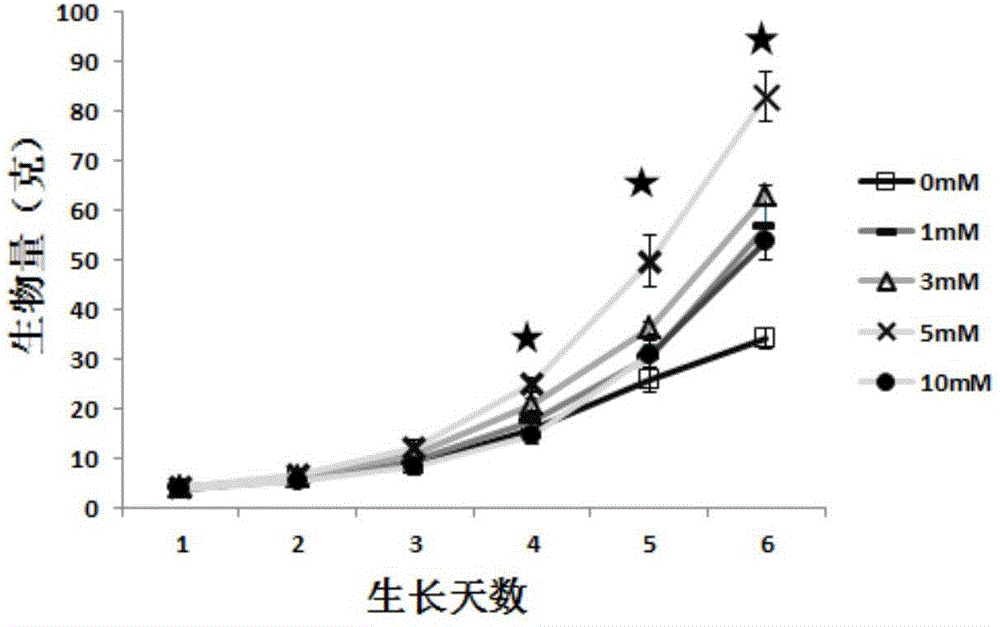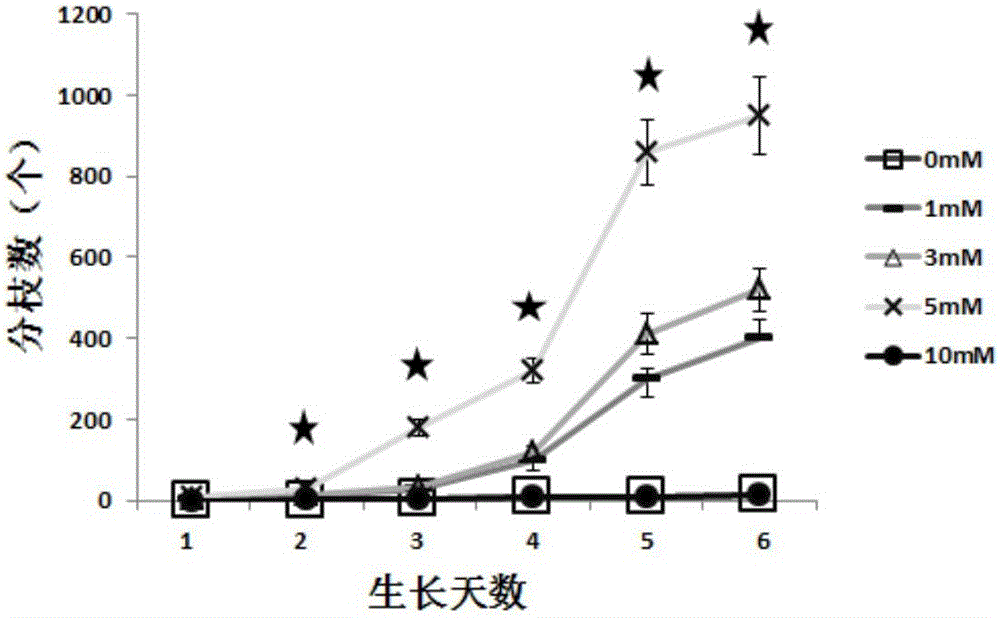Rapid propagation method for physcomitrella patens protonemata
A technology of Physcomitrella patens and protoceles, applied in the biological field, can solve the problems of low reproductive efficiency and achieve the effects of improving application potential, increasing the number of branches, and increasing biomass
- Summary
- Abstract
- Description
- Claims
- Application Information
AI Technical Summary
Problems solved by technology
Method used
Image
Examples
Embodiment 1
[0021] 1. Materials and methods:
[0022] 1.1 Research materials:
[0023] The materials used in the present invention are Physcomitrella patens GD2004 species, which are stored in a laboratory incubator after multiple generations of plant tissue rapid propagation.
[0024] 1.2 Research methods:
[0025] 1.2.1 Experimental design: The protocelium material of Physcomitrella patens grown for 5 days was mechanically ground and crushed for subculture, and the test plates with different calcium ion concentrations based on BCD medium were set up, and inoculated after grinding and subculture at various concentrations of CaCl 2 On the BCD medium plate, observe the growth state, and finally determine the optimal calcium ion concentration for the growth and differentiation state of the protoceles.
[0026] 1.2.2 Protocelium tissue culture rapid propagation technology: use a homogenizer to grind the plant material mechanically, inoculate the plant homogenate on the medium, place at 23...
PUM
 Login to View More
Login to View More Abstract
Description
Claims
Application Information
 Login to View More
Login to View More - R&D
- Intellectual Property
- Life Sciences
- Materials
- Tech Scout
- Unparalleled Data Quality
- Higher Quality Content
- 60% Fewer Hallucinations
Browse by: Latest US Patents, China's latest patents, Technical Efficacy Thesaurus, Application Domain, Technology Topic, Popular Technical Reports.
© 2025 PatSnap. All rights reserved.Legal|Privacy policy|Modern Slavery Act Transparency Statement|Sitemap|About US| Contact US: help@patsnap.com



